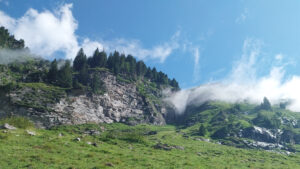Abstract/Description
For decades, the ‘GLORIA’ programme has been studying how plant communities living on mountaintops are changing around the world. It has therefore become a standard method for assessing plants on mountains. In 2020, an additional module was introduced to study the soil fauna on GLORIA mountaintops: ‘GLORIA Extended’. To our knowledge, this protocol has only been used twice: first in the Gesäuse National Park in Styria (Austria), and then in South Tyrol (Italy). There are two GLORIA target regions in South Tyrol: (1) the Dolomites and (2) the Texel Group. Each target region consists of four isolated mountain peaks at four different elevations above the natural tree line. Five metres below each summit, we installed four pitfall traps in each of the four cardinal directions (i.e. 16 traps in total), which remained active for two weeks. We also conducted suction sampling for small invertebrates living in the ground vegetation. Preliminary results show significant differences between the soil faunal communities of the four peaks. The mean abundance (as activity density) decreases linearly with increasing elevation. Coleoptera were the most dominant taxa always exceeding 30% of the total community and reaching even 60% on the highest peaks. Other dominant groups change with elevational steps (e.g. in the Dolomites): Formicidae at 2199 m (<25%), Opiliones at 2730 m (~18%), and Araneae at 2890 m (~15%). Taxa such as Isopoda and Chilopoda were absent from the higher peaks, reaching their elevation limits. Further, we could find more macro- and mesofauna specimens on the south-facing than on the north-facing slopes. These insights into the compositions of the soil fauna already reveal a highly diverse and separable communities, up to the high alpine sites. Certain groups such as Diplopoda and Opiliones were found up to 3000 m, showing that the soil fauna is also active in high alpine zones. We expect new findings of alpine soil fauna as such remote peaks have rarely been sampled before.


